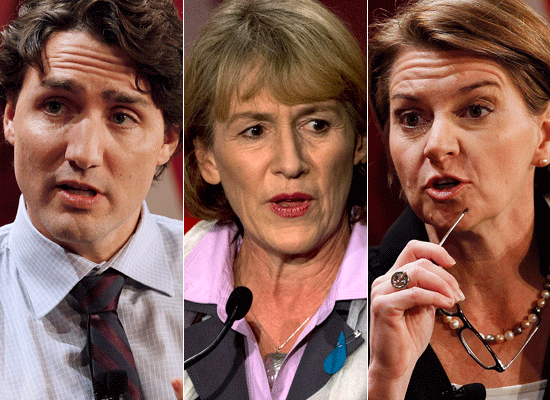
With news last week that that the Liberal Party of Canada has 294K supporters who may be eligible to vote in the upcoming leadership election and a public opinion poll showing the Liberals in second place, the sun is shining on federal Liberals. But we should not get carried away in our celebrations.
More than half of these supporters -- estimates range from 150K to 165K -- have been signed by the Justin Trudeau campaign, which bodes well for him. As a supporter of Martha Hall Findlay, it certainly motivates me to work harder.
But the race is not over, and we should be cautious about celebrating our success so far. The key members of the Trudeau campaign, to their credit, seem to be aware that signing up supporters is just one step in a long road back to political relevance for the Liberal Party.
Just over a year after the members of the party voted to adopt this supporter system, we can, however, draw some initial conclusions about its success as an innovation in our federal politics.
It is striking how different party leadership elections are from our general elections. While attachment to political parties has been steadily declining, parties have slowly opened up their leadership elections. Most parties allow all members to vote via a preferential ballot. Some parties weight these votes by riding, but others do not (this is a point of some contention in the Conservative Party).
The general shift, in all parties, has been towards directly electing the leader rather than electing representatives who choose the leader. As a result, we have several models to which we can compare the current federal Liberal approach.
So far, the federal Liberal experiment has turned out to mirror closely the Alberta Liberal leadership election in 2011, where the party signed up 27,567 supporters. As in the federal contest, supporters did not have to pay a membership fee.
Last year, before the Liberal convention, I estimated how many people we might expect to see participate in a Liberal leadership race with supporters and a series of regional primaries (the primaries idea was not adopted by members). To estimate participation, I looked at the turnout rate in the US and French presidential primaries for the Democrats and the Socialist Party.
At the time, the Republican presidential primaries were dominating the US news cycle. Both comparators are a bit of a stretch, as they are established, major electoral events in republics, but they provide at least an upper bound estimate of what we might see in Canada.
In the US, turnout of Democrats in the 2008 presidential primaries varied considerably by state. Expressed as a percentage of the voting eligible population (VEP), turnout was 13.9 per cent in Florida, 22.2 per cent in California and 32.1 per cent in Vermont (see more details on turnout by state). In France, turnout in the Socialist Party primaries was 6.5 per cent of VEP.
Based on these numbers, I forecast that participation of supporters in the Liberal leadership -- in a series of regional primaries -- might range from 473K to 1.2 million people. This level of participation has clearly not been attained.
In fact, even if every single Liberal supporter registers to vote and actually votes, the maximum participation rate in the federal Liberal leadership will be 1.2 per cent of the VEP, a far cry from the participation rate in either the US or French primaries.
This participation rate is almost identical to the situation of the Alberta Liberals, whose 27K supporters represented roughly 1.2 per cent of the VEP in Alberta. Only 31 per cent of these supporters bothered to vote in the Alberta Liberal leadership that elected Raj Sherman, the former PC MLA, with 54 per cent of the points on the first ballot.
In comparison, 144K members who paid a $5 fee voted on the second ballot of the 2006 Progressive Conservative leadership in Alberta, representing at least 6.8 per cent of the VEP. Admittedly, this leadership contest was a de facto vote on who would become Premier and had perhaps the highest participation rate of any party leadership contest in Canadian history. For the federal Liberal leadership to match this level of participation, the party would need 1.65 million supporters to vote nationwide.
In terms of federal comparisons, even though the Conservatives and NDP limited their leadership elections in 2004 and 2012 to paid members, they had participation rates more in line with the Alberta Liberals. The Conservatives had 97K members vote (0.43 per cent of VEP) and the NDP had 65K members vote (0.27 per cent of VEP).
At 0.36 per cent of VEP, the Alberta Liberal experiment with supporters is smack dab in the middle of the two federal one-member, one-vote contests.
It is too early to know how many federal Liberal supporters will register by the March 14 deadline, and even more difficult to forecast what voter turnout will be under the system of online and telephone voting the party has chosen (a similar approach to that of the Alberta Liberals).
If turnout is similar to the Alberta experiment, it may be that only 91K Liberal supporters bother to vote, which would put it, in terms of participation, behind the Conservative leadership contest that elected Stephen Harper in 2004 but ahead of the recent NDP leadership.
At this point we don't know how it will all unfold. But early indications are that we Liberals should resist the temptation to boast about our results so far and get back to work.
